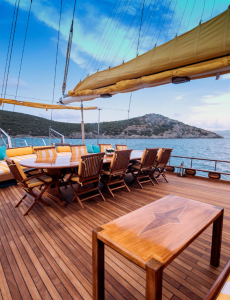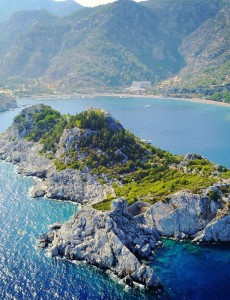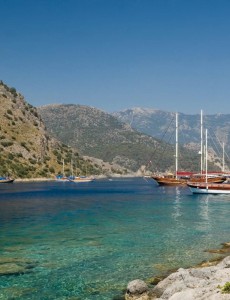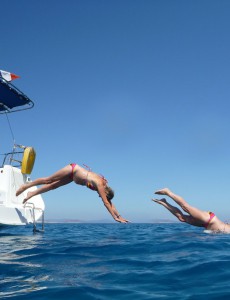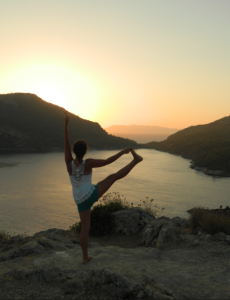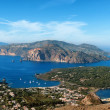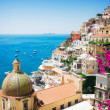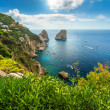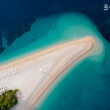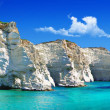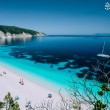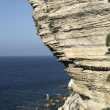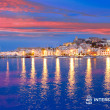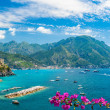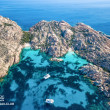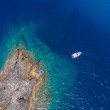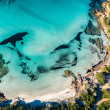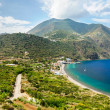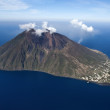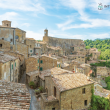
Turkey
Discovering Turkey: Where Continents Meet and Coasts Captivate
Landing in Turkey is like stepping into a mosaic of landscapes and stories. The breeze carries the scent of citrus and salt, city streets unfold into waterfront cafés, and distant mountain silhouettes fade into warm coastal haze. For travelers seeking a Turkey travel guide or building a Turkey itinerary, this country offers more than a destination—it’s a journey through contrasts and depth.
Straddling Europe and Asia, Turkey is a land in motion. Its western shores are lined with ancient ruins, vineyard-draped hills, and whitewashed villages perched over the Aegean. Along the southern coastline, long beaches meet pine-covered headlands and secluded coves where time seems to slow. These are places where the sea is always nearby, reflecting changing tones of blue and turquoise depending on the light, the season, and your perspective.
The Turkish coast isn’t just beautiful—it’s immersive. The Mediterranean and Aegean waters shape daily life, from bustling harbor towns to quiet fishing villages. Swimming, snorkeling, or simply watching the sunset from a seaside cliff feels less like a pastime and more like a ritual. These coastal experiences offer not only relaxation, but also a sense of closeness with the environment—an invitation to drift with the rhythm of the sea.
If you're wondering about things to do in Turkey that go beyond landmarks, consider the elemental pull of the coast. Turkey’s beaches range from expansive stretches in Patara to tiny inlets tucked between cliffs along the Turquoise Coast. The water is clear, calm, and rich with life—ideal for long swims, marine exploration, or moments of quiet stillness. And while there’s no single best time to visit Turkey, each season brings a different light to its shores, from the sun-soaked months of summer to the warm, breezy days of early autumn.
Whether you're exploring with a guide or letting intuition lead the way, the real charm of Turkey lies in what unfolds between its land and sea—where movement slows, senses awaken, and every cove hints at something new.


Discover the Coastline: Sailing Turkey from Bay to Bay
The Turkish coastline stretches for thousands of kilometers, a jagged line of cliffs, pine forests, sun-drenched beaches, and historic ruins facing the ever-changing blue of the Mediterranean. To explore this region by sea is to embrace a slower, richer rhythm—one that unfolds from cove to cove and island to island, guided by the wind and light.
A cruise in Turkey is more than a holiday—it's a way to immerse yourself in a culture shaped by the sea. From the calm waters of Göcek Bay to the dramatic cliffs of Butterfly Valley, each route invites discovery. The Gulf of Fethiye is perfect for first-time sailors, offering sheltered anchorages and villages where time seems to stand still. Meanwhile, the Datça Peninsula rewards experienced adventurers with remote beaches, wild landscapes, and a sense of freedom that only the open sea can offer.
Beyond the famed turquoise coastline, sailors can discover hidden gems like the Twelve Islands near Fethiye or the small bays near Bozburun, ideal for quiet anchorages and authentic seafood dinners onshore. These waters are calm, warm, and welcoming for much of the year—perfect conditions for relaxed navigation or longer passages under sail. Watching the sun set over a quiet inlet, far from crowds, is one of the most treasured moments of any voyage.
The appeal of sailing Turkey also lies in its seamless blend of nature and history. Ancient ruins like Knidos or Lycian tombs dot the cliffsides, often visible only from the sea. These unspoiled anchorages offer a unique perspective—reaching cultural heritage sites by boat creates a deeper connection to the land and its stories.
Turkish marinas, such as those in Marmaris, Bodrum, and Kaş, are well-equipped and welcoming, combining modern amenities with a strong nautical tradition. Even smaller fishing harbors along the coast invite stopovers that turn into unforgettable encounters with locals and traditions.
IntersailClub curates bespoke sailing Turkey experiences, offering a selection of weekly itineraries that balance comfort and adventure. Whether you choose a catamaran charter in Turkey, a private yacht Turkey route, or a sociable cruise Turkey option, the experience is tailored to reveal the coast in its purest form. Every itinerary blends local insight with maritime freedom, letting you wake up each morning in a new corner of the Aegean or Mediterranean.

Coastal Cultures and Ancient Legacies of Turkey
Along Turkey’s vast and storied coastline, the sea has long been the primary author of history, culture, and daily life. Stretching from the sun-drenched shores of the Aegean to the rugged cliffs of the Mediterranean, this maritime landscape has shaped the soul of coastal Turkey. Here, the history of Turkey is not locked behind glass, but carved into stone harbors, whispered through ancient trade winds, and etched in the rhythms of daily coastal life.
Port towns like Bodrum, Fethiye, and Antalya rose and thrived thanks to their direct relationship with the sea. Halicarnassus (modern-day Bodrum) gave the world Herodotus and remains one of the oldest living harbors in the Mediterranean. In Fethiye, rock-hewn tombs overlook coves once used by Lycian sailors. Antalya still celebrates its maritime past with annual boat festivals and waterfront rituals. These coastlines are not merely beautiful—they are the living archaeology of Turkey, layered with stories of departure and return.
The life of Turkey along the coast beats to a nautical rhythm. Fishing boats still leave at dawn from the same harbors that once launched Byzantine fleets. Local seafood markets bustle with the day’s catch. Music, often inspired by the sea, drifts from harbor cafés. In every dish of grilled fish or bowl of meze, there are echoes of centuries of maritime exchange and influence—culinary stories passed down alongside maps and sea routes.
Traditional craftsmanship, too, reflects this bond with the sea. From boatbuilding in Bozburun to intricate knotting techniques found in coastal carpets, the influence of sailing culture runs deep. Festivals along the coast, such as the Bodrum Cup, honor not only vessels but the enduring spirit of seafaring communities.
To truly grasp the culture of Turkey along its shores is to embrace its maritime heart. Here, the sea is more than scenery—it is memory, movement, livelihood, and legacy. Travelers who explore these waters experience a continuity between past and present that no inland road could offer. In Turkey, the coast does not merely border the country—it defines it.
Sailing Seasons in Turkey: Understanding Wind, Light, and Coastal Rhythm
June is the hottest month in Havana with an average temperature of 27°C (81°F) and the coldest is January at 21°C (70°F) with the most daily sunshine hours at 11 in July. The wettest month is June with an average of 80mm of rain. The best month to swim in the sea is in August when the average sea temperature is 30°C (86°F).
Check all Statistics in AccuweatherAll destinations in Mediterranean Sea
-

-

-

-

-

-

-

-

-

-

-

-

-

-

-

-

-

-

-

-

-

-

-

-

-

-

